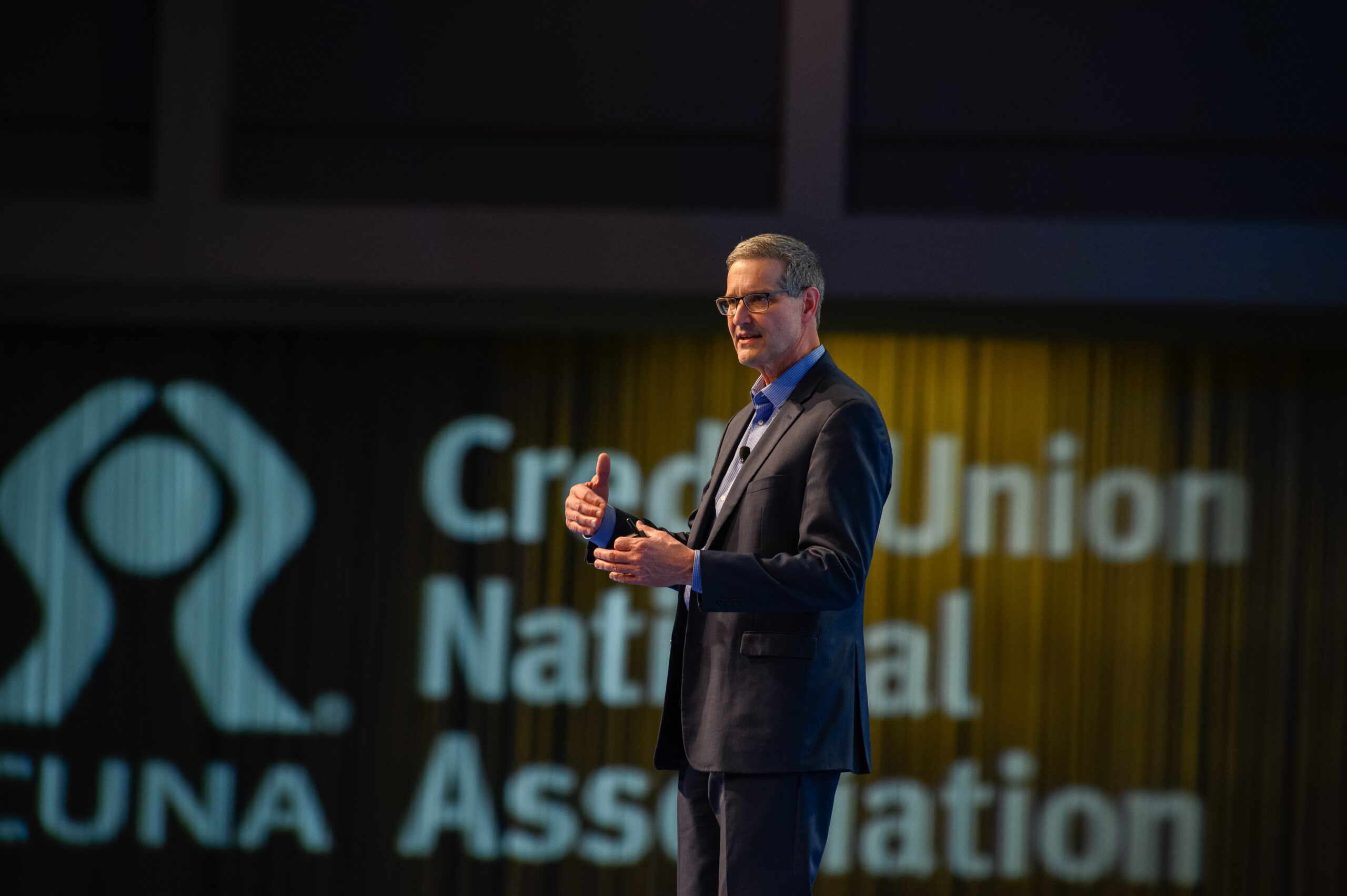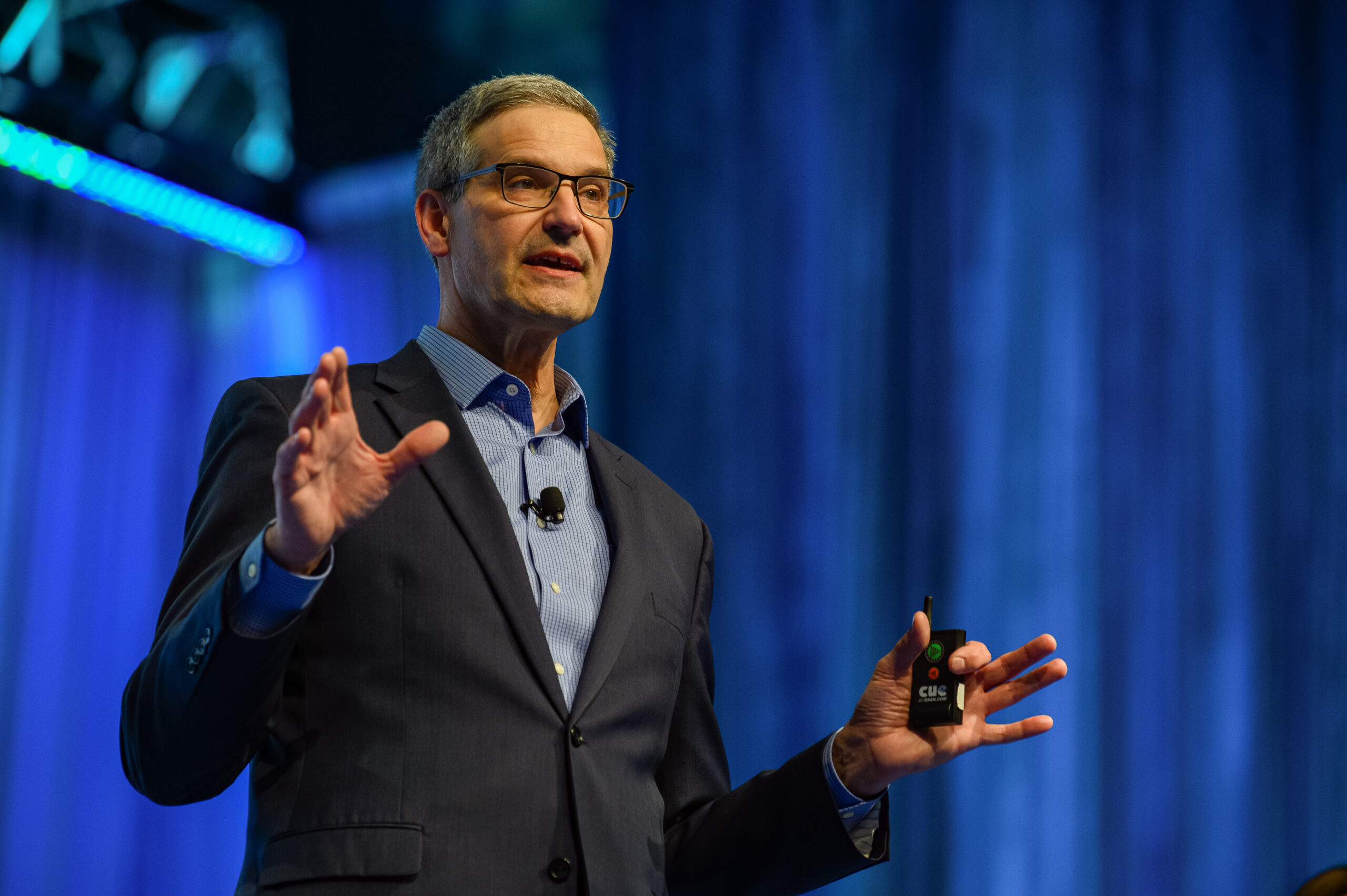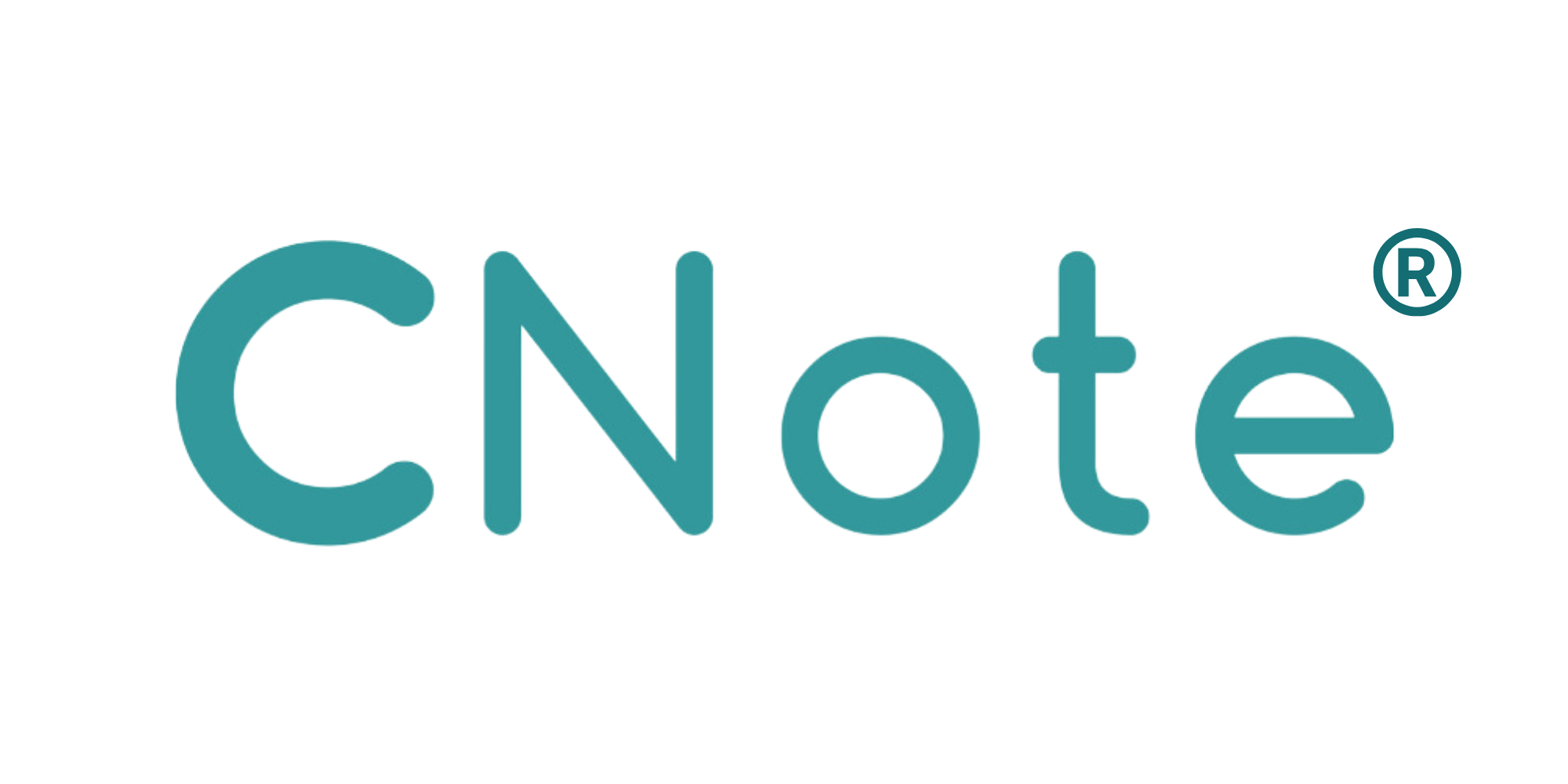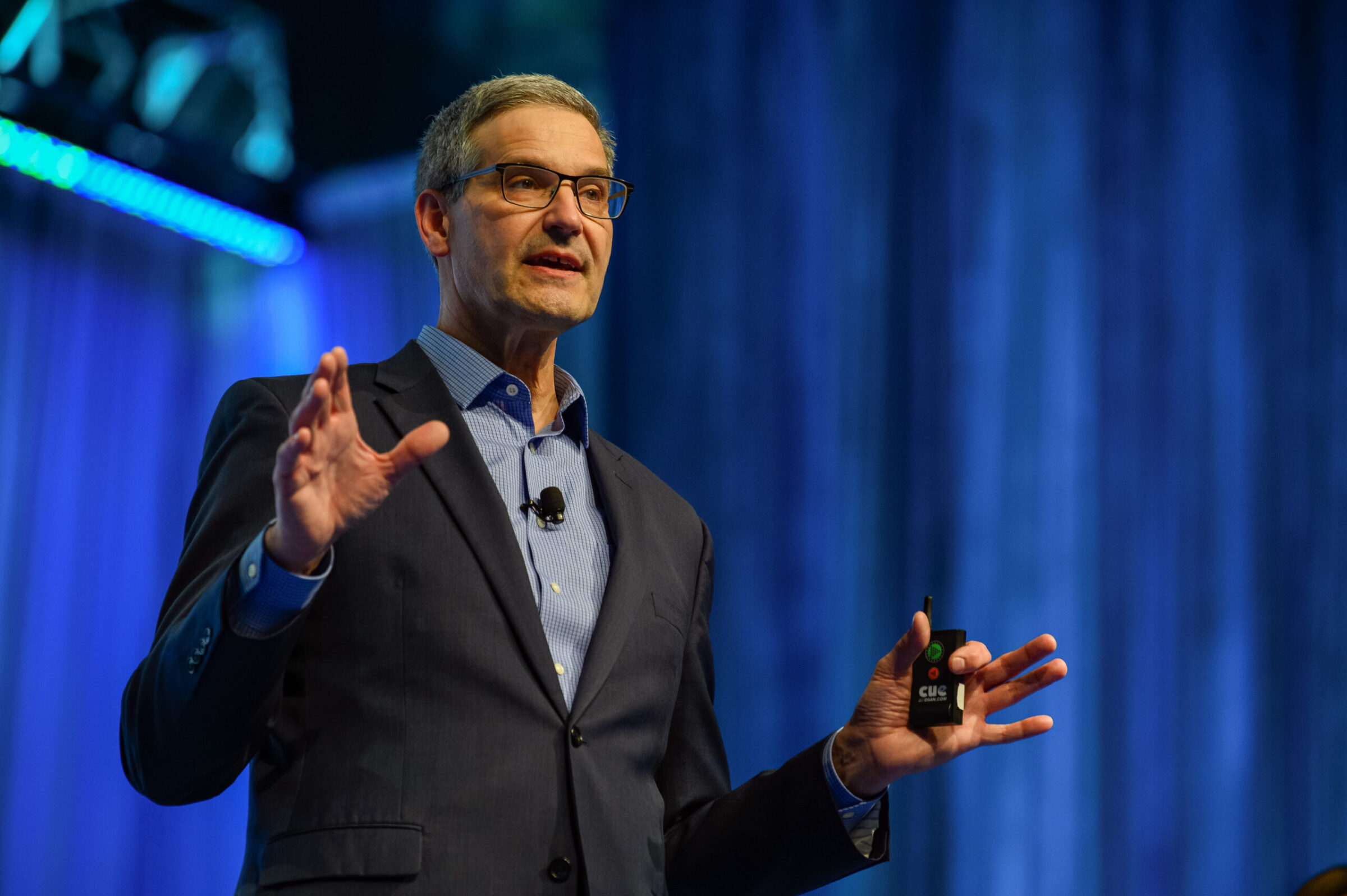Mike Schenk has more than 35 years of experience in the financial services industry. In 1992, he joined the Credit Union National Association (CUNA), which is the largest and most influential trade association advocating for credit unions in the country. Today, Mike is both CUNA’s Deputy Chief Advocacy Officer for Policy Analysis and CUNA’s Chief Economist. In his concurrent roles, Mike simultaneously supports the organization’s advocacy initiatives and conducts economic research to help support those public relations efforts. Mike’s analyses regularly appear in trade publications like Credit Union Magazine, and he’s a frequent contributor to the financial media.
 Outside of CUNA, Mike serves on the board of the Filene Research Institute, an independent, nonprofit consumer and cooperative finance think tank. Additionally, Mike has served on the board of Summit Credit Union—a $5 billion financial cooperative with over 220,000 members—for nearly 20 years.
Outside of CUNA, Mike serves on the board of the Filene Research Institute, an independent, nonprofit consumer and cooperative finance think tank. Additionally, Mike has served on the board of Summit Credit Union—a $5 billion financial cooperative with over 220,000 members—for nearly 20 years.
We caught up with Mike to talk about his advocacy work, the state of credit unions, and challenges facing the industry, and we got the opportunity to hear about why he’s so passionate about getting credit unions to share their impact stories with as many people as possible.
CNote: Having worked in the industry for more than 30 years, what keeps you excited about credit unions?
Mike Schenk: Obviously, credit unions are the superior model, because in addition to being member-owned, they’re democratically controlled. I spend a lot of time running around the country and talking about the economy and the economic outlook and how we think that’s going to influence credit union operations and interactions with members, but the other half of my job is to come up with numbers and data and analysis to support our advocacy and public relations efforts and activities. That’s what I get excited about. I do see the credit union charter as being the superior alternative for consumers, and the obvious effects are worth talking about. The transformative effect of cooperative finance is really obvious in the marketplace, and we’re now building out a really extensive data set around that idea, which gets me even more excited.
CNote: How do your concurrent roles at CUNA complement each other?
Mike Schenk: I sometimes feel like going around the country and doing economic presentations takes me off my game, but there is a really strong connection between the two activities. Ever since I arrived here 30 years ago, in my economic updates, I have been talking about the obvious economic disparities in wealth and income that have existed for the past 30 to 50 years and that have been growing over that period of time. For example, the fact that so few people have rainy days funds set aside. Those are things that I talk about in my economic updates, and they have that direct relationship to the advocacy component of what I’m here for.
People want to hear about the economy and some of them like to argue about where it’s going, but at the end of the day, I think the value in my travel and discussion about the economy is that we have these conversations around financial well being, even though we might not call it that, such as the fact that so many people live paycheck to paycheck. Then, we talk about how, operationally, credit unions can more effectively and efficiently deliver on their promise, despite all the challenges that we wrestle with.
CNote: How has your advocacy work shifted over time?
Mike Schenk: Historically, when I would advocate, it seemed to me like a lot of our messaging and the themes that we would cover would be the need for policymakers to relieve regulatory burdens. We spent a lot of time talking about how that relief would provide us with more opportunities to serve more people, but I think we kind of missed the boat from a messaging perspective, because there really is an obvious theme and obvious data points and behavioral differences between credit union members and non-members that are super helpful. So, part of our strategic shift as an organization has been to make sure that we emphasize this idea that the mission really revolves around delivering on the idea of financial well being on the one hand, but also operationalizing that and using that in everything that we do, including in advocacy, so that policymakers actually have the proof of impact.
CNote: You spend a lot of time meeting with policymakers and advocating for credit unions. What’re some of the changes that you and your colleagues are promoting?
Mike Schenk: We are interacting with policymakers almost on a daily basis. One example of what we talk about is getting legislation drafted to make changes to our imperfect credit union charter so that we can serve more people, because right now, we’re prevented from serving everyone we want to serve. One of the things that we say to policymakers is, ‘if you were to create a depository financial institution like a credit union today, there’s no way you would create an institution that was only able to serve certain people. You would want everybody to be served.’ Field of Membership restrictions are a vestige of times gone by, back from when credit unions were originally created and there was no such thing as a credit bureau. Field of Membership was created so there’d be a greater likelihood that members would know one another, and then when it came time to make a loan decision, you would have some input from the other members that would give you some idea of potential borrowers character and capacity and collateral. Today, that’s all automated and we have a bunch of ways to assess risk, so the reason for Field of Membership doesn’t exist anymore.
CNote: What else comes up in those conversations with policymakers?
Mike Schenk: Because credit unions are not for profits, we don’t pay federal income taxes. The value of that income tax exemption is about $2 billion a year, so it’s a pretty significant advantage for us. Policymakers, however, want to know that they’re getting some bang for their buck with this $2 billion tax advantage. The answer is absolutely. We frequently say this isn’t just a good investment, it’s the best investment that policymakers make when it comes to investments in the consumer sector. Our pricing data shows that credit unions leverage the value of the tax exemption and deliver even more value in the marketplace. So, we’re not just passing through the $2 billion. In recent years, it’s been somewhere in the neighborhood of $13 to $15 billion that credit unions deliver back in direct financial benefits to members. We just want to make it as obvious as possible to anybody who will listen, not just policymakers, but to consumers who may not know about credit unions, and we’re in the middle of this transformation where we’re quantifying this stuff in a much more mindful way.
CNote: What’s something that you think that credit unions could do better?
Mike Schenk: There’s no question that credit union managers and credit union employees are out there doing great work every day and really transforming lives, and they do it because that’s what they’ve always done. However, what we don’t always do a great job of is communicating that out to a broad audience. Actually, I don’t think we always do a great job of communicating it internally in our credit unions: sharing stories with staff and with boards of directors and that sort of thing. It happens from time to time, but I feel like it would really be impactful to share those stories, measure those impacts, report out on those impacts and do it seven times, seven ways, over and over and over again, and then do it again. We really need to share our impact stories in a more mindful and regular way.
When I speak to credit union audiences, they know this viscerally. They understand the credit union difference. They live it. But, especially for smaller institutions, people wear many different hats, and it takes time to document and to memorialize these stories. That means it kind of falls to the bottom of the list and sometimes doesn’t get done at all. This is definitely one of the challenges we face, but credit unions are really here to change people’s lives, so, first and foremost, we need to talk about and share these impact stories whenever we can.
CNote: According to the numbers, there are fewer credit unions today than there were 10 years ago. What’s your take on that?
Mike Schenk: That trend is real, but that’s because there have been a lot of mergers. In many respects, it’s a reflection of the regulatory burden placed on credit unions. Many credit unions are quite small. The last time I looked, close to 40% of credit unions were operated by five or fewer full time equivalent employees. It’s very difficult to operate a financial institution of that size when you have to worry about not just a large pile of rules and regulations in the first place, but constant changes to those rules and regulations, and the introduction of new rules and regulations against the backdrop of things like massive cybersecurity threats. Also, when you have a smaller organization, you lack economies of scale, you lack economies of scope, and if you’re competing on price alone, that makes it very, very difficult to stay alive, because the big guys just have more pricing power than you do.
CNote: What are some other reasons that help to explain the uptick in merger activity?
Mike Schenk: A few things come to mind. It’s increasingly difficult to find qualified directors. Being on the board of directors of a financial institution of any size is a pretty big responsibility. One CEO I used to work with liked to say to his board, “you’ve taken on a huge amount of liability for an occasional sleeve of golf balls,” which really gets your attention, because you realize there is a lot of responsibility. If you screw it up, you could be in big trouble. So, having qualified board members is critically important, and ensuring that those board members are diverse and that they represent the people that are able to join the credit union makes it doubly difficult these days. People are busy, and it’s definitely a time commitment.
Something that’s been magnified recently, especially for smaller institutions, is the war for talent. That’s a really big obstacle for many smaller institutions that can’t necessarily compete on price or pay above-market wages. Instead, they have to do more innovative things like trying to convey the value in learning a lot about a financial institution rather than specializing in one job, but all of that comes into play.
CNote: Would you say that staffing is one of the biggest challenges facing credit unions today?
Mike Schenk: Operationally, yes, that is the big challenge today. Everybody’s talking about getting people. It’s the same complaint and the same challenge that many businesses are facing. There are a lot more job openings than there are people looking for work, so attracting and cultivating and maintaining relationships with employees has been a really big challenge. Of course, while the increases in wages have not kept up with inflation, wages are increasing very quickly, so the cost of attracting people is also rising very quickly. Credit unions are one of those sort of frontline organizations where, at least to a certain extent, people are actually required to be physically present so that we can do our job. In the current environment, and even over the last couple of years, that makes it doubly difficult.
 CNote: What’s on the horizon at CUNA that has you excited for the future?
CNote: What’s on the horizon at CUNA that has you excited for the future?
Mike Schenk: In January, we purchased the Equifax database, and we intend to use that to actually measure outcomes across this 28-billion-record database. We are at the point where we’re beginning to make interesting observations that make it very, very clear that no matter where you sit on the credit spectrum, doing business with a credit union results in better outcomes. I’ll give you a quick example. For someone with the highest credit score, the price for a $30,000 automobile loan at a credit union versus a $30,000 automobile loan at a bank results in a savings of about $1,500 over the life of the loan for that consumer. That’s for someone with very high credit. People in the lower rungs of the credit ladder save even more. I estimate that if you’re a subprime borrower and you come to a credit union for an automobile loan and you get it, you’re gonna save close to $12,000 over the life of that loan. It’s a big deal. That’s real money for average people. At CUNA, we have some really smart people using Equifax’s database to build that narrative out in a really impactful way, and it’ll be less about how people feel about credit unions and more about actual impact and what happens to people along the way.


